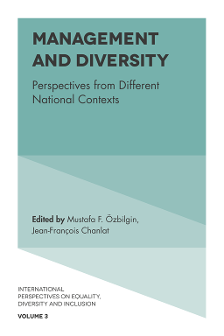
Index
ISBN: 978-1-78635-550-8, eISBN: 978-1-78635-549-2
ISSN: 2051-2333
Publication date: 3 May 2017
Citation
(2017), "Index", Management and Diversity (International Perspectives on Equality, Diversity and Inclusion, Vol. 3), Emerald Publishing Limited, Leeds, pp. 315-323. https://doi.org/10.1108/S2051-233320160000003014
Publisher
:Emerald Publishing Limited
Copyright © 2017 Emerald Publishing Limited
INDEX
- Prelims
- Introduction
- A Latin American Perspective on Diversity Management: What Does “Inclusion” Mean in a Peruvian Context?
- Racial Inequality and Managing Diversity in the United Kingdom and United States
- Management, Diversity, Equal Opportunity, and Social Cohesion in France: The Republic Resistant to Differences
- The French Notion of Diversity Management to Test Against the Alterity of Pacific Island Cultures
- Managing Diversity in Brazil
- Diversity Management in Organizations in Québec and Canada: Facts, Figures and Real-Life Experiences
- Practical Considerations for the Management of Diversity and Inclusion in an Emerging Market Context: A South African Case Study
- The Challenges of Diversity Management in Africa: The Case of Cameroon
- Diversity in the Arab World: Challenges and Opportunities
- Diversity Management and the Scandinavian Model: Illustrations from Denmark and Sweden
- Diversity Management as Window Dressing? A Company Case Study of a Diversity Charta Member in Germany
- About the Editors
- About the Authors
- Index